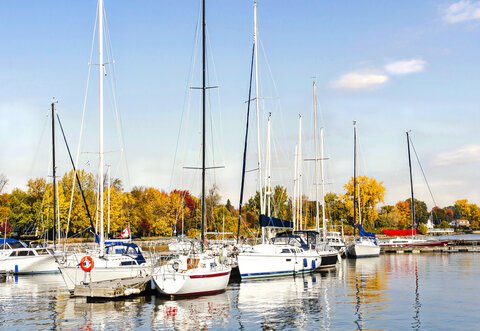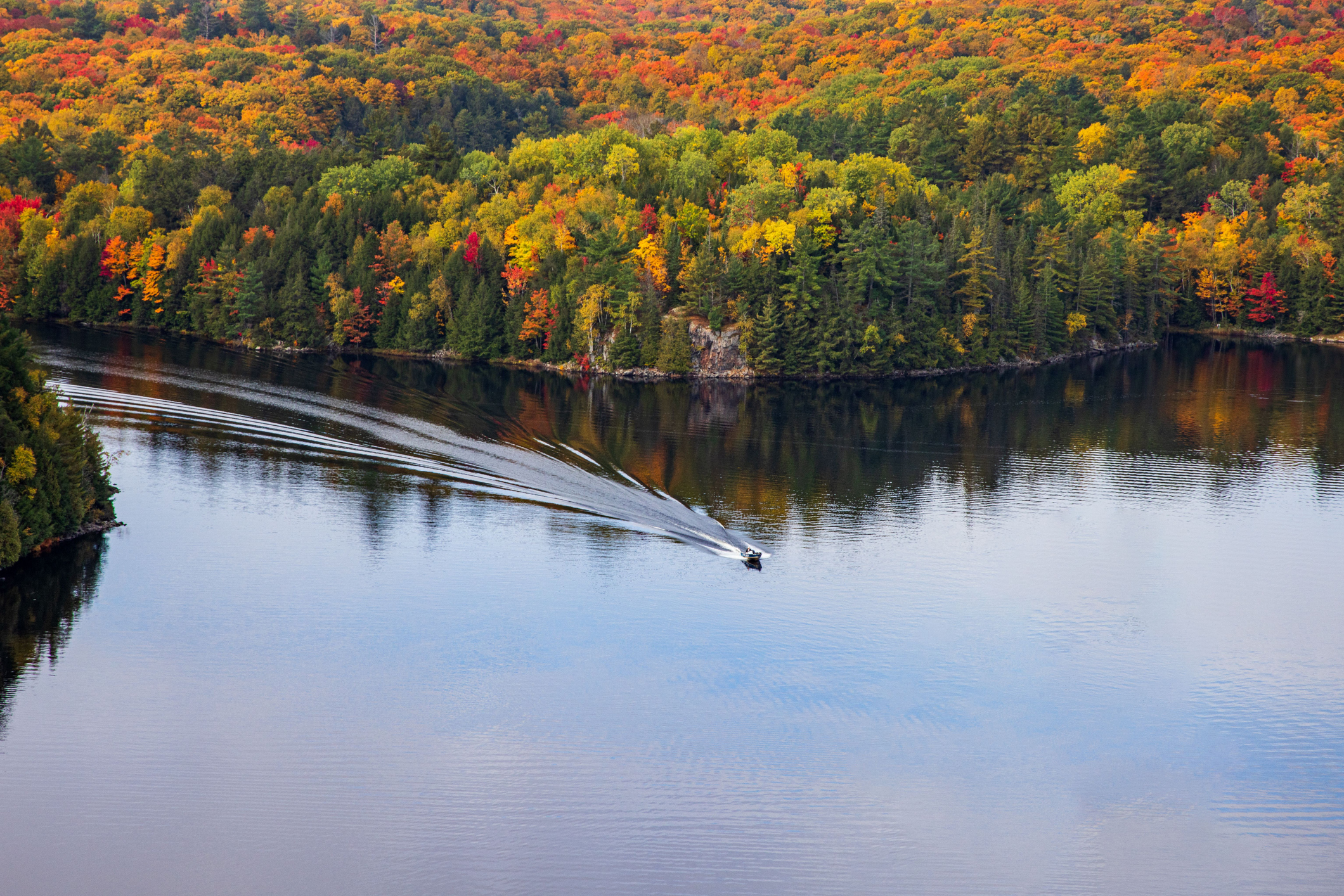Boating isn't just a summer activity! Many boaters cherish the crisp, peaceful autumn days on the water. Fall offers stunning scenery and quieter waterways, but it also brings unique challenges and risks. But with these tips for boating safety in autumn, you can enjoy the best of fall boating confidently and responsibly.
The Top Tips for Safe Boating in Autumn
1. Check the Weather Forecast
Fall weather can change in the blink of an eye, making monitoring the forecast before and during your trip extra important. Temperatures can drop quickly, and unexpected storms may roll in, especially in the afternoon.
For safe fall boating, always check reliable sources like weather apps or marine radio stations. Monitoring wind speeds is also a good idea, as autumn gusts can make water conditions choppy.
2. Dress for the Weather
Fall brings cooler temperatures, especially in the early mornings and late afternoons. Dressing in layers is the key to staying warm, comfortable, and safe. Start with thermal undergarments, and add water-resistant and windproof outer layers.
Gloves, hats, and even blankets are helpful to have on board in chillier weather. Packing extra dry clothing on board is also a smart safety move in case you get wet.
Remember to adjust your life jacket to fit around your bulkier clothing. Even though it's cooler, wearing a life jacket at all times remains one of the most important safety measures.
3. Water Temperatures
While the air might feel mild, water temperatures in fall can be dangerously cold. Hypothermia is a real risk, and it can set in quickly if you fall overboard or get soaked by a rogue wave.
Before setting out, check local water temperatures and be mindful of any sudden weather changes that could make the water even colder.
Avoid falls by staying alert, moving cautiously on deck, and using handrails when necessary. In emergencies, it's also essential to carry cold-water survival gear, like a thermal blanket.
4. Check And Monitor Boat Basics
As fall progresses, it's important to thoroughly inspect your boat before heading out.
Mechanical issues can be more troublesome in colder weather; take the time to inspect your boat as the seasons change. Check the engine, battery, fuel lines, and bilge pumps for any signs of wear or damage.
Cooler temperatures can affect fuel efficiency, and since many marinas have reduced hours or even close for the season in the fall, it's essential to monitor your fuel levels more carefully.
Always start your trip with a full tank and know the locations of open refueling stations along your route. Having extra fuel on board for longer journeys is also a good idea.
5. Stay Alert for Debris in the Water
Autumn brings not only beautiful foliage but also extra debris in the water. Fallen leaves, branches, and other debris can become risky – especially in lakes and rivers. These objects can damage your boat's propeller or clog the engine, potentially causing mechanical failure when you least expect it.
Stay alert and keep a keen eye on the water, especially in areas with heavy foliage or near shorelines. Navigating at slower speeds will give you more time to react if you encounter debris.
6. Limited Daylight Hours
Planning your fall boating trips around daylight becomes more critical as the days get shorter. Give yourself plenty of time to return to the dock before sunset.
Boating after dark comes with additional risks, especially in unfamiliar waters or in fall's unpredictable weather conditions.
Before heading out, check that your navigation lights are fully operational, and keep a powerful flashlight on board as a backup in case you find yourself out later than expected.
7. Safety Gear
One of the most essential safety tips for fall boating is always having reliable communication methods and proper safety gear onboard. In an emergency, a fully charged cell phone or, better yet, a VHF radio (which works even when you're out of cell phone range) can make all the difference.
Additionally, make a float plan that includes your route, expected departure and return times, and contact information and share it with a friend or family member so they know where you'll be and when to expect your return.
Don't skimp on safety gear! Ensure you have the essentials, including life jackets, a fire extinguisher, first-aid kit flares, a whistle, and a bell.
Tips for Safe Boating in Autumn
Fall boating offers a unique and peaceful experience, but it's important to be well-prepared to handle the seasonal changes – and challenges. With these fall boating safety tips, you can stay safe while enjoying the crisp air, stunning scenery, and quieter waters.


